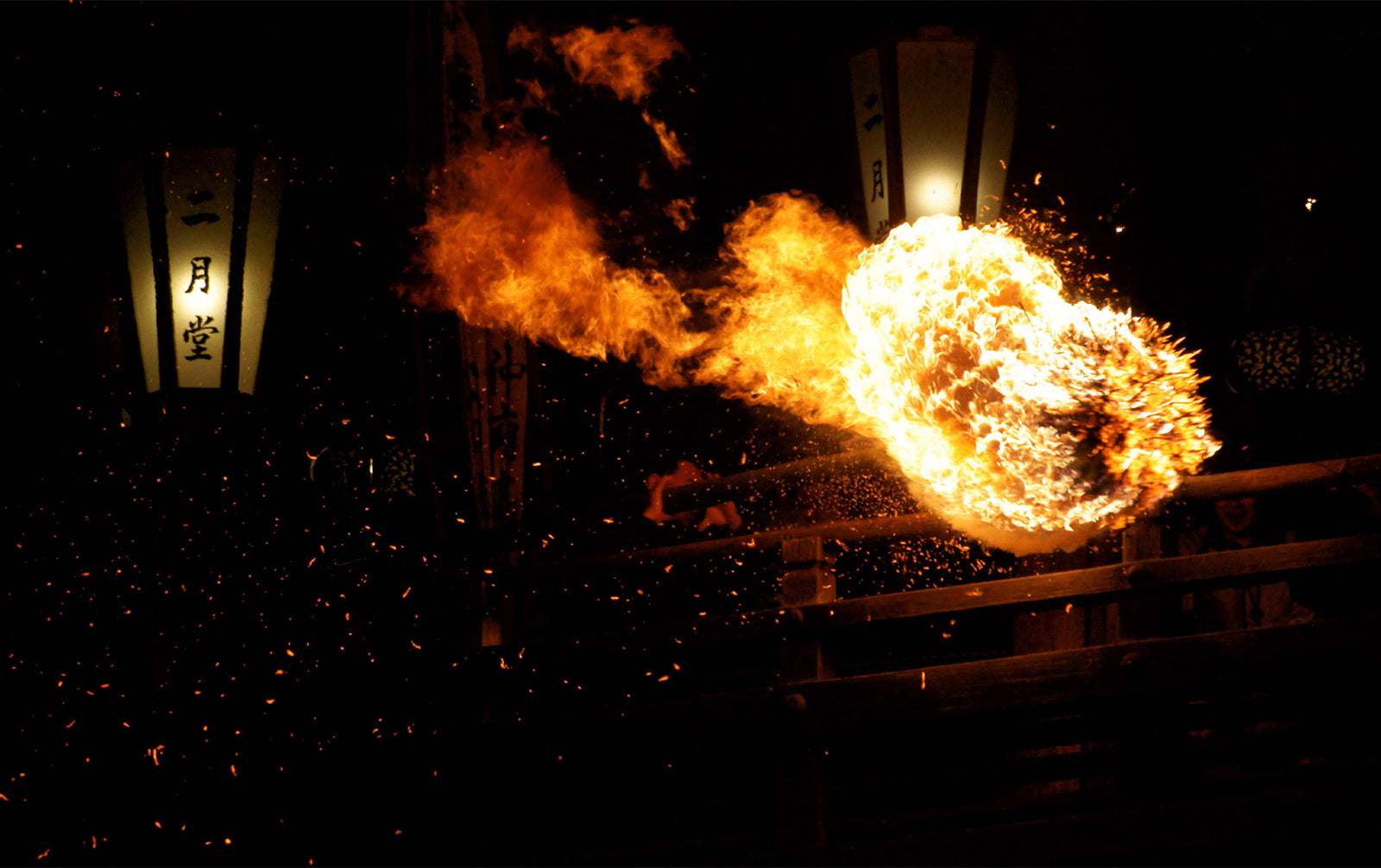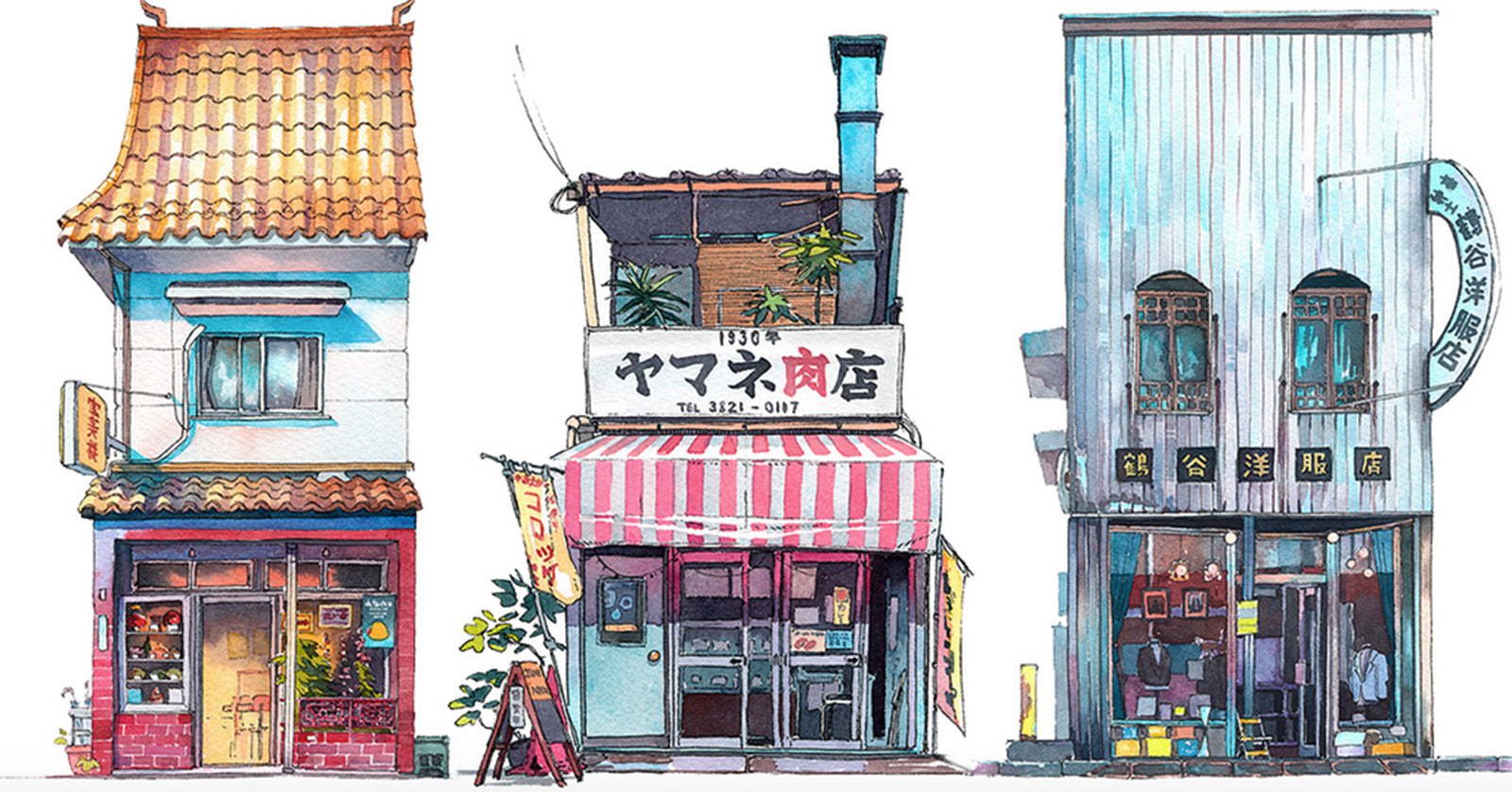
OMIZUTORI: JAPAN BETWEEN FIRE AND WATER
Among the oldest Buddhist rituals in Japan, with a thousand-year history, the Omizutori Festival (お水取り) is celebrated in the first half of the month of March: despite being known as the Water Festival , it is fire and sparks that gather every year thousands of people.

A Buddhist monk twirls a fiery torch during the ceremony © Nature Conservacy
This bewitching and engaging event is held, from the year 752 onwards, always in the same place: inside Nara Park, and more precisely in the Nigatsu-Do building of the very famous Todaiji , a temple complex that stands out both for its marvelous white decorations painted on the imposing ancient wooden structure, both for the wonders and cultural riches it contains, including the enormous statue of Buddha Diabutsu over 15 meters high.
 The majestic statue of Buddha Diabutsu in the Todaiji Temple © Renner Italia
The majestic statue of Buddha Diabutsu in the Todaiji Temple © Renner Italia The birth of the festival dates back to an ancient legend according to which the founder of the temple, to inaugurate it, threw a party inviting many deities. One of these, Onyu-Myojing, arrived late and to apologize for it she had water flow directly from the ground in front of the temple: a sacred water with healing properties which, every year at the same time, appears in the temple well so that the monks offer it to the deities as a sign of respect and veneration.
The festival consists above all of weeks of prayer in which the faithful confess their sins and ask for peace and tranquility, but it is also an opportunity for meeting and sharing : in the magical context of the temple, among deer and camellia flowers, it is possible to taste the traditional monks' rice cake and receive beautiful handmade lucky talismans.

 Fire sparks fall onto the crowd from the balcony of Todaiji Temple © Japan webmagazine
Fire sparks fall onto the crowd from the balcony of Todaiji Temple © Japan webmagazineThe culmination of the celebrations is reached on March 12th: the crowd multiplies under even larger torches of fire and around midnight the actual Omizutori (literally, "drawing water") takes place. In the darkness of the night, between torches and drum sounds, a group of monks is accompanied to the well to draw the sacred water, which has then appeared, in view of the Dattan ceremony where it is offered to the deities. This passage takes place behind closed doors, but the crowd outside remains large, in silence, amid the sounds of horns and bells audible from inside.

The festival ends on March 14th , the day on which all ten large torches are placed on the counter and lit at the same time, while the monks dance and play traditional instruments, recreating a surreal and fascinating atmosphere. 
A cherry tree in bloom during Hanami © Unsplash
The end of the Festival also marks the beginning of Hanami (花見 - literally "looking at the flowers"), a very important moment in Japanese culture which we told youabout here .
This is the cherry blossoming corresponding to the beginning of spring which, also thanks to the Omizutori celebrations, should be fertile and serene.



